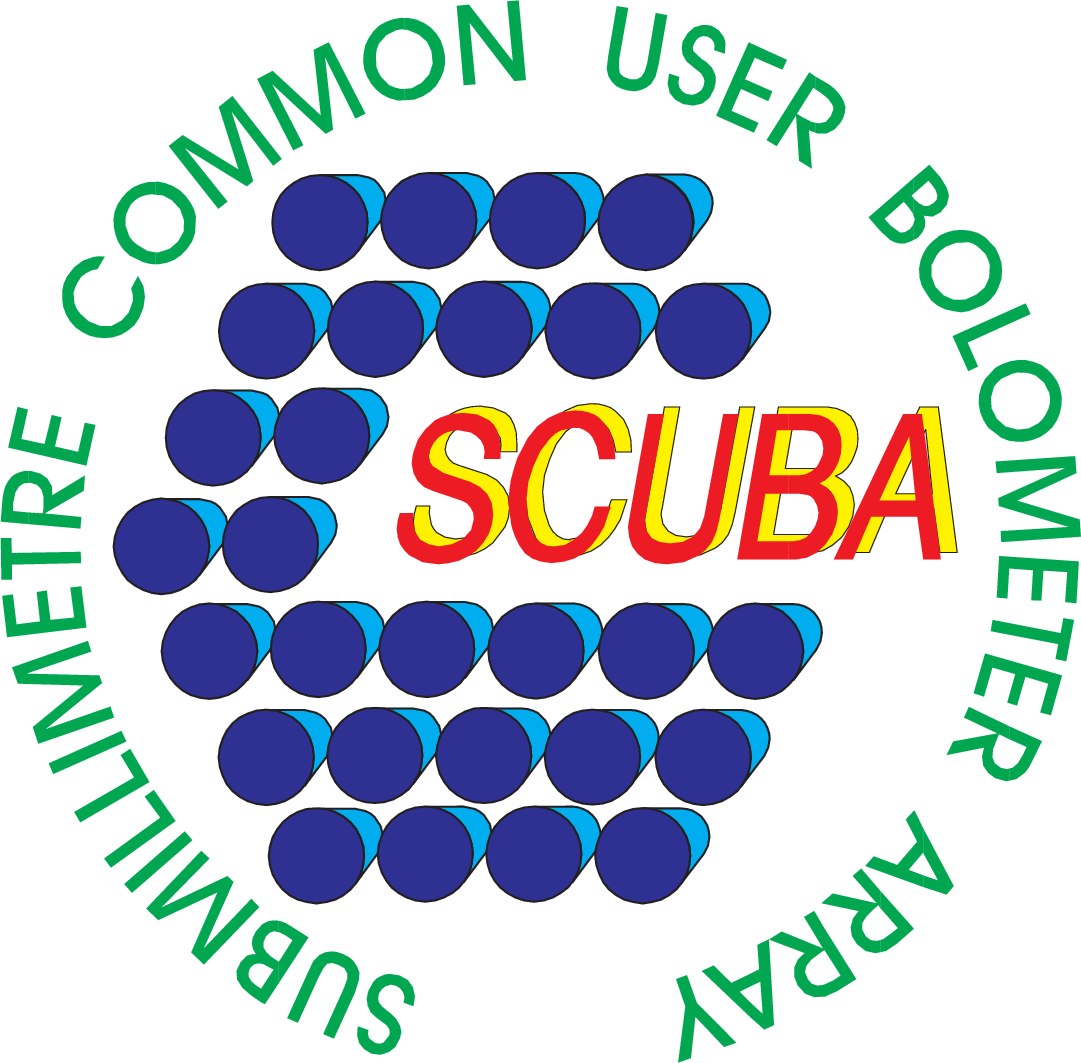This document describes how to reduce SCUBA data and includes detailed descriptions of each task.
[1] Holland W. S, Cunningham C. R., Gear W.K.,
Jenness T., Laidlaw K., Lightfoot J. F., Robson E. I., 1998, “SCUBA – A submillimetre camera
operating on the James Clerk Maxwell Telescope” in Advanced Technology MMW, Radio and
Terahertz Telescopes, Philips T. G. (ed), Proc. SPIE 3357, 305
[2] Holland W. S., Robson E.I., Gear W.K.,
Lightfoot J. F., Jenness T., Ivison R. J., Stevens J. A., Cunningham C. R., Ade P. A. R.,
Griffin M. J., Duncan W. D., Murphy J. A., Naylor D. A., 1999, MNRAS, 303, 659
[3] Warren-Smith R. F., 1995, NDF – Routines for Accessing the Extensible N-Dimensional Data
Format, Starlink User Note 33
[4] Draper P. W., 1997, GAIA – Graphical Astronomy and Image Analysis Tool, Starlink User
Note 214
[5] Currie M. J., 1997, KAPPA — Kernel Application Package, Starlink User Note 95
[6] Privett G. J., Jenness T., Matthews H. E., 1997, FLUXES – JCMT Position and Flux
Density Calibration, Starlink User Note 213
[7] Currie M. J., Privett G. J., Chipperfield A. J., 1995 CONVERT – A format-conversion
package, Starlink User Note 55
[8] Currie M. J., 1994, HDSTRACE – HDS data file listing, Starlink User Note 102
[9] Stevens J. A., Ivison R. J., Jenness T., 1997, The SCUBA photometry cookbook, Starlink
Cookbook 10
[10] Sandell G., 1997, The SCUBA mapping cookbook: A first step to proper map reduction,
Starlink Cookbook 11
[11] Emerson D. T., Klein U., Haslam C. G. T., 1979, ApJ, 76, 92
[12] Emerson D. T., A.S.P. Conf. Ser 75, 309
[13] Jenness T., Lightfoot J. F., Holland W. S., 1998, “Removing Sky contributions from
SCUBA data” in Advanced Technology MMW, Radio and Terahertz Telescopes, Philips T. G. (ed),
Proc. SPIE 3357, 548
[14] Matthews H. E., Jenness T., 1997, The Specx cookbook, Starlink Cookbook 8
[15] Chipperfield A. J., 1999, ADAM, Starlink User Note 144
[16] Richer J. S., 1992, MNRAS, 254, 165
[17] Eaton N., 1995, AGI — Applications Graphics Interface, Starlink User Note 48
[18] Rees P. C. T., Chipperfield A. J., 1995, MERS (MSG and ERR) – Message and Error
Reporting Systems, Starlink User Note 104
[19] Greisen E. W., Calabretta M., 2002, Representations of celestial coordinates in FITS, A&A,
395, 1077
[20] Warren-Smith R. F., Berry D. S., 1998, AST – A Library for Handling World Coordinate
Systems in Astronomy, Starlink User Note 210
[21] Warren-Smith R. F., Lawden M. D., 1995, HDS – Hierarchical Data System, Starlink
User Note 92
[22] Terrett D. L., 1993, PSMERGE – Encapsulated Postscript handling utility, Starlink User
Note 164
[23] Berry D. S., Gong W., Parsons D. C., 1995, IRAS90 — IRAS Survey and PO Data
Analysis Package – Reference Guide, Starlink User Note 163
[24] Jenness T., Stevens J.A., Archibald E.N., Economou F., Jessop N.E., Robson E.I.,
MNRAS, 336, 14
[25] Shortridge K., Meyerdierks H. M., Currie M. J., Clayton M., FIGARO – A general
data reduction system, Starlink User Note 86
[26] Hughes D. H., 1993, JCMT–UKIRT Newsletter, 4, 32
[27] Economou F., Bridger A., Wright G. S., Rees N. P., Jenness T., 1998, “The future of
data reduction at UKIRT”, Astronomical Data Analysis Software and Systems VII, Albrecht R.,
Hook R. N., Bushouse H. A. (eds), ASP Conference Series, 145, 195
[28] Jenness T., Economou .F., 1999, The SCUBA Data Reduction Pipeline: ORAC-DR at
the JCMT, in Astronomical Data Analysis Software and Systems VIII, Mehringer D. M.,
Plante R. L., Roberts D. A. (eds), ASP Conf. Ser., 172, 171
[29] Berry D. S., Gledhill T. M., 1999, Polpack – An imaging polarimetry reduction package,
Starlink User Note 223
[30] Jenness T., Lightfoot J. F., 1999, The SURF Programming Interface, Starlink System Note
72
[31] Archibald E.N., Jenness T., Holland W.S., Coulson I.M., Jessop N.E., Stevens J.A.,
Robson E.I., Tilanus R.P.J., Duncan W.D., Lightfoot J.F., 2002, MNRAS, 336, 1
[32] Stevens J. A., Robson E. I., 1994, MNRAS, 270, L75
[33] Meyerdierks H. M., Berry D., Draper P., Privett G., Currie M. J., 1997, PDA – Public
Domain Algorithms, Starlink User Note 194
[34] Berry, D. S., 1996, GRP – Routines for Managing Groups of Objects, Starlink User Note
150
[35] Duncan, W. D., SCUBA project documentation, SCU/WDD/31.1/1093
[36] Archibald, E., Wagg J. W., Jenness T., 2000, Calculating Sky Opacities: a re-analysis for
SCUBA data, SCUBA Calibration Database System Note 002
[37] Wall L., Christiansen T., Schwartz R. L., 1996, Programming Perl, 2nd edn., O’Reilly
& Associates, Inc.
[38] Jenness T., Bly M. J., 1998, NDFPERL – Perl interface to NDF, Starlink User Note 222
